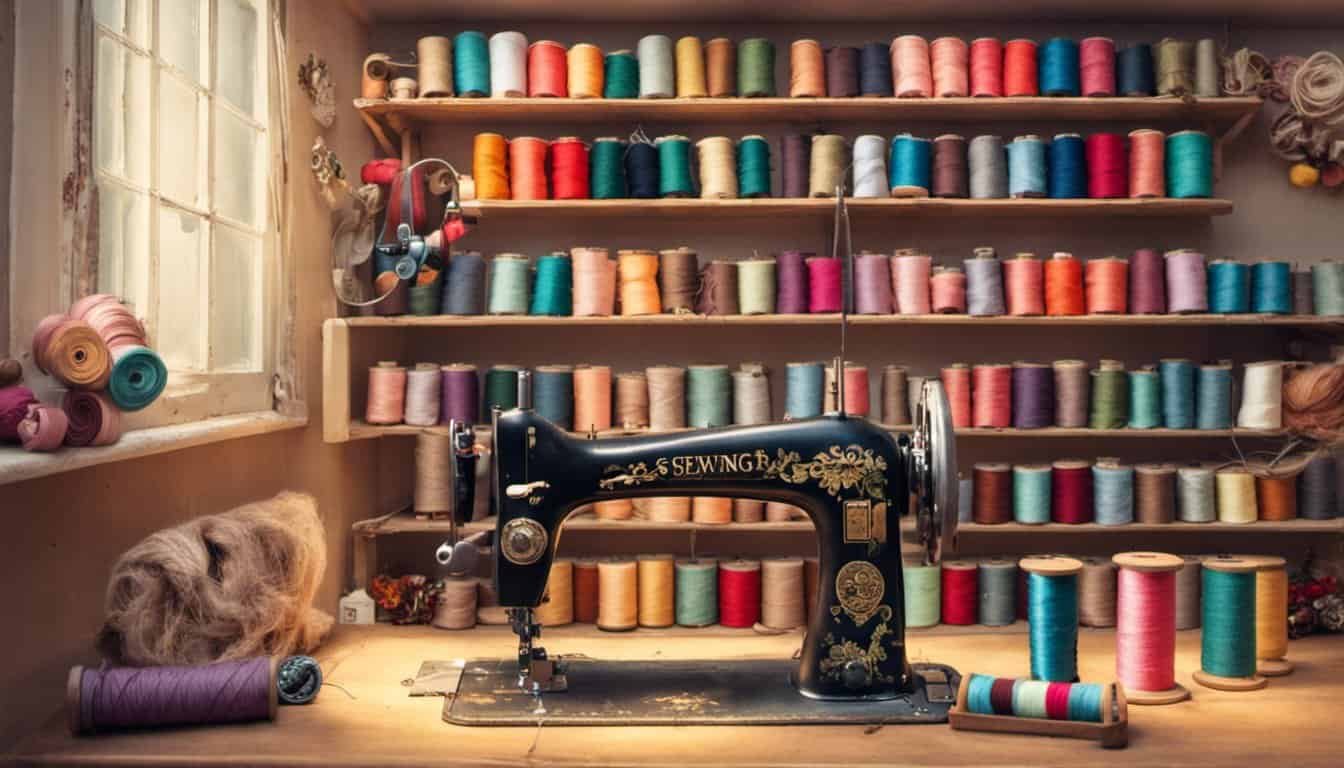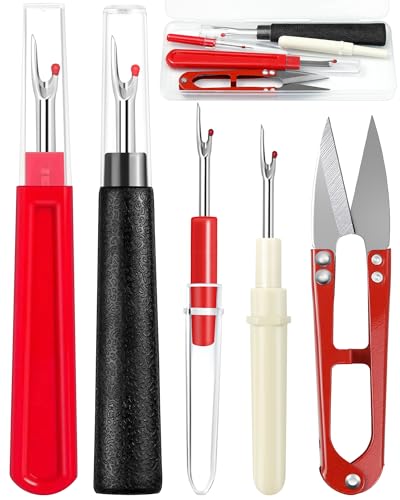Dealing with a broken seam on your favorite heavy fabric can be frustrating, but you don’t need to give up on that cherished piece just yet. Whether it’s a sturdy canvas bag, a denim jacket, or a thick upholstery project, fixing a broken seam can extend the life of your items and save you money.
You might think that repairing heavy fabrics is too challenging, but with the right tools and a bit of patience, you can tackle this task yourself. In this guide, you’ll find easy-to-follow steps that make mending thick materials straightforward and achievable. From identifying the best techniques to selecting the right supplies, we’ve got you covered. Let’s dive in and restore your heavy-duty fabrics to their former glory.
Assessing the Damage
Begin by thoroughly inspecting the broken seam to understand its complexity. Identify the fabric type, such as canvas, denim, or upholstery material, to select appropriate repair techniques. Measure the length and width of the tear to determine the extent of reinforcement needed. Examine adjacent areas for additional stress or weakening that may affect the repair’s durability.
Check the seam construction by noting the stitch type, spacing, and thread thickness. Determine whether the original seam was sewn by hand or machine, as this will guide your repair method. Assess any fraying edges and trim excess threads to prepare a clean area for mending. If the fabric has multiple layers, ensure all layers are aligned correctly before proceeding.
Use a magnifying tool if necessary to evaluate small or intricate seam details. Document any irregularities or unique stitching patterns that must be replicated for a seamless repair. Understanding these factors ensures a precise and lasting seam restoration.
Gathering Necessary Tools
Having the right tools ensures your seam repair is effective and durable. Gather these essentials before you begin.
Sewing Machines for Heavy Fabric
Select a sewing machine built for heavy fabrics to handle thick materials efficiently. Key features include:
- Powerful Motor: Manages multiple fabric layers without slowing.
- Heavy-Duty Needles: Designed for thick textiles like denim and canvas.
- Adjustable Presser Foot: Accommodates varying fabric thicknesses.
- Walking Feet: Provides consistent stitching on bulky materials.
Recommended Models:
| Model | Features |
|---|---|
| Singer Heavy Duty 4411 | Strong motor, metal frame, multiple stitch options |
| Janome HD3000 | Durable construction, adjustable settings, reliable performance |
Hand Sewing Tools
Prepare with these hand sewing tools for precise seam repairs:
- Thick Needles: Prevent fabric puckering and ensure smooth stitches.
- Strong Thread: Use polyester or nylon for maximum durability.
- Thimbles: Protect your fingers during manual stitching.
- Fabric Scissors: Sharp blades for clean cuts on heavy fabrics.
- Pins or Clips: Secure fabric layers before sewing to maintain alignment.
Ensure each tool is in good condition to facilitate a seamless repair process.
Repairing the Broken Seam
Repairing the broken seam involves precise preparation and effective stitching techniques to ensure durability and a professional finish.
Preparing the Fabric
Begin by stabilizing the fabric to prevent further damage during repair. Align the torn edges accurately, matching the original seam lines. Use fabric clips or heavy-duty pins to secure the edges in place. Trim any frayed threads with sharp fabric scissors to create clean edges. Apply fabric interfacing to reinforce the area if the fabric is particularly heavy or stressed. Ensure the fabric remains smooth by pressing it with an iron, which helps maintain alignment and facilitates easier stitching.
Stitching Techniques
Select a stitch type that offers strength and longevity for heavy fabrics. Utilize a backstitch for its robust hold, making it ideal for seams that endure stress. Maintain a consistent stitch length, typically between 2.5 to 3.0 millimeters, to ensure an even and professional appearance. Double-stitch areas that experience high tension to enhance durability. For machine sewing, adjust your machine to handle thick materials, using heavy-duty needles and strong thread. When hand sewing, employ a reinforced whip stitch to secure the seam effectively. Always backstitch at the beginning and end of your stitching to lock the threads in place, preventing unraveling.
Reinforcing the Seam
Strengthening the repaired seam ensures long-lasting durability and prevents future breaks. Follow these steps to effectively reinforce your seam on heavy fabric:
Use Fabric Interfacing
Fabric interfacing adds stability to the seam, reducing strain and enhancing strength.

- Select Appropriate Interfacing: Choose a heavyweight interfacing compatible with your fabric type.
- Apply with Heat: Iron the interfacing onto the underside of the fabric, following the manufacturer’s instructions.
- Cut to Size: Trim the interfacing slightly larger than the seam area for full coverage.
Install a Backing Fabric
Backing fabric provides additional support behind the seam, distributing stress evenly.
- Choose Strong Material: Opt for materials like denim, canvas, or felt for effective reinforcement.
- Position Accurately: Place the backing fabric directly behind the seam line.
- Secure with Stitching: Sew the backing fabric to the main fabric using sturdy stitches, ensuring it remains in place.
Double-Stitch the Seam
Double-stitching enhances the seam’s strength by adding an extra layer of stitches.
- Use Heavy-Duty Thread: Select a thread designed for heavy fabrics to withstand tension.
- Maintain Even Tension: Ensure both stitching layers are evenly spaced to provide consistent reinforcement.
- Overlap Stitches: Slightly overlap each stitch line to eliminate gaps and increase durability.
Apply Seam Binding
Seam binding encases the seam, protecting it from wear and tear.
- Select Durable Binding: Choose a binding material that matches the fabric’s weight and type.
- Measure and Cut: Accurately measure the seam length and cut the binding to fit.
- Attach Securely: Sew the binding over the seam, ensuring it covers the entire area without puckering.
Use Reinforcement Patches
Adding patches at stress points prevents the seam from weakening over time.
- Identify Stress Areas: Locate points where the seam experiences the most strain.
- Cut Patch to Size: Shape the patch to cover the identified stress points adequately.
- Affix with Strong Adhesive: Use fabric glue or sew the patch securely onto the seam for maximum reinforcement.
Incorporate Binding Tape
Binding tape reinforces the seam edges, providing additional strength and preventing fraying.
- Choose Suitable Tape: Select binding tape designed for heavy fabrics.
- Align Properly: Place the tape along both sides of the seam edge.
- Secure with Stitching: Sew the binding tape firmly to the fabric, ensuring it stays in place during use.
Utilize Bar Tack Stitches
« How Sewing Reflects Cultural Identity: Discover the Powerful Stories Behind Every Stitch
Top 10 Best Sewing Machine Lights for Better Visibility You Can’t Miss »
Bar tack stitches reinforce the seam ends and areas under high tension.
- Thread Your Needle: Use a strong thread compatible with your sewing machine.
- Apply Short, Tight Stitches: Sew back and forth rapidly to create a dense, reinforced area.
- Focus on Critical Points: Place bar tacks at the start and end of the seam and any high-stress zones.
Reinforce with Rivets or Grommets
Adding rivets or grommets provides mechanical reinforcement to the seam.
- Select Appropriate Hardware: Choose rivets or grommets that match your fabric’s color and weight.
- Mark Placement Areas: Identify where reinforcement is needed along the seam.
- Secure Firmly: Use a rivet or grommet tool to attach the hardware securely, ensuring it holds the seam together effectively.
Implementing these reinforcement techniques enhances the strength and longevity of your repaired seam, ensuring your heavy fabric items remain durable and functional for years to come.
Tips for Long-Lasting Repairs
To ensure your seam repairs endure, follow these essential tips:
Choose the Right Thread
Use high-quality, heavy-duty polyester or nylon thread. These materials offer superior strength and flexibility, making them ideal for heavy fabrics like canvas or denim.

Reinforce Stress Points
Identify areas under constant stress, such as pockets or seams near straps. Apply extra stitching or use reinforcement patches to prevent future tears.
Use Appropriate Stitching Techniques
Employ strong stitching methods like backstitching or double-stitching. These techniques provide added durability and help maintain seam integrity over time.
Select the Correct Needle
Choose needles designed for heavy fabrics, such as denim or upholstery needles. They penetrate thick materials smoothly, reducing the risk of skipped stitches or fabric damage.
Maintain Consistent Stitch Length
Ensure your stitches are uniform in length, typically between 2.5 to 3.0 mm. Consistent stitches distribute tension evenly, enhancing the seam’s strength and appearance.
Trim Excess Threads
After sewing, trim any loose threads close to the seam. Excess threads can catch and peel, weakening the repair and causing unraveling.

Apply Seam Sealant
For added protection, apply a fabric-friendly seam sealant. This creates a barrier against moisture and wear, extending the life of your repair.
Regularly Inspect and Maintain
Periodically check repaired seams for signs of wear or weakness. Address minor issues promptly to prevent them from escalating into larger problems.
Properly Press Seams
Use an iron to press seams after sewing. Pressing flattens stitches and reduces bulk, preventing strain that can cause seams to weaken over time.
Store and Handle with Care
When not in use, store your fabric items in a dry, cool place. Proper storage minimizes stress on seams, preserving the integrity of your repairs.
Implementing these tips will enhance the durability of your seam repairs, ensuring your heavy fabric items remain functional and looking great for years to come.

Conclusion
Repairing a broken seam on heavy fabric might seem daunting but you’ve got the skills to make it happen. With the right tools and techniques you’ll restore your favorite items and give them new life. Taking the time to reinforce your seams ensures lasting durability so your projects stay strong for years to come. Embrace the satisfaction of fixing instead of replacing and enjoy the personalized touch of your handiwork.

















